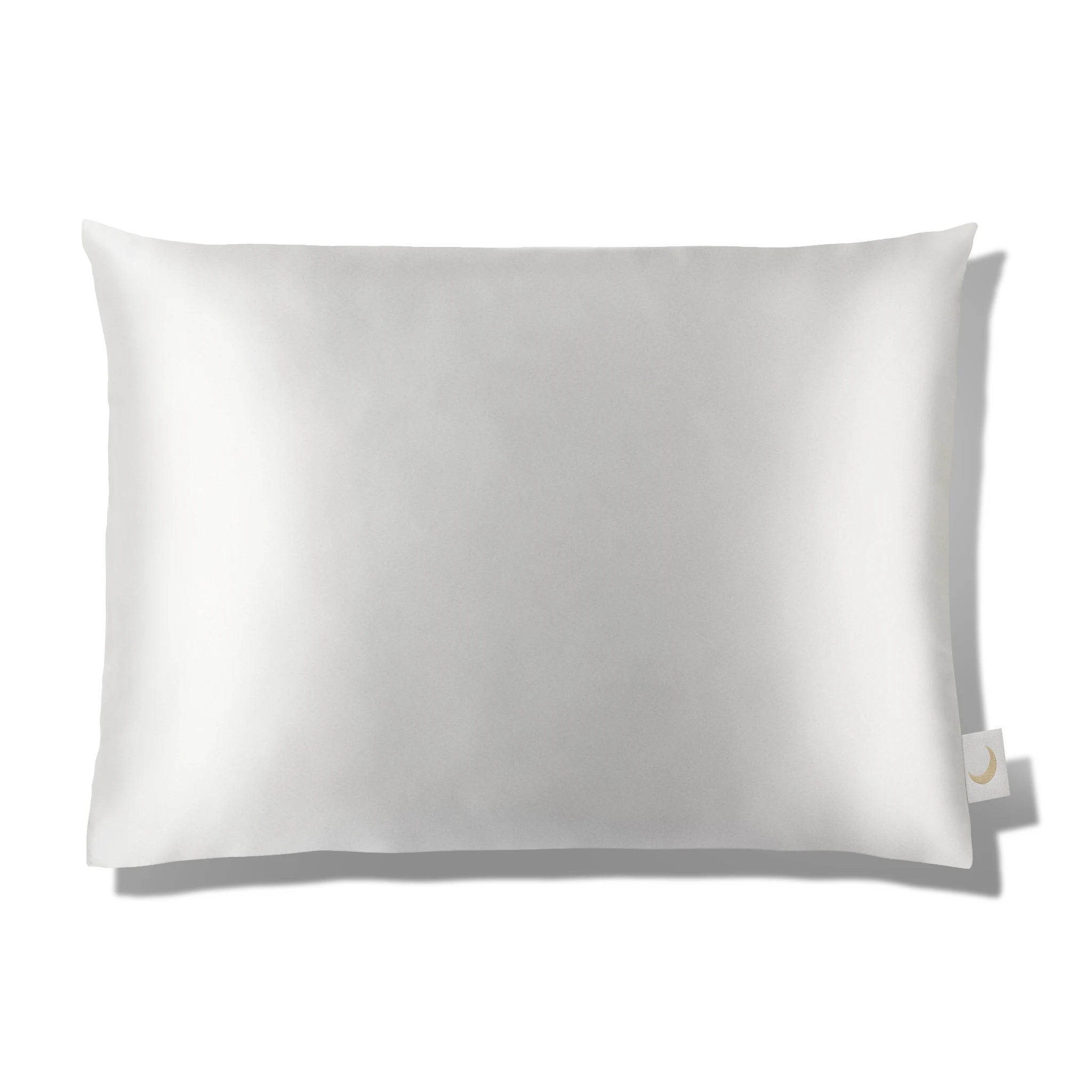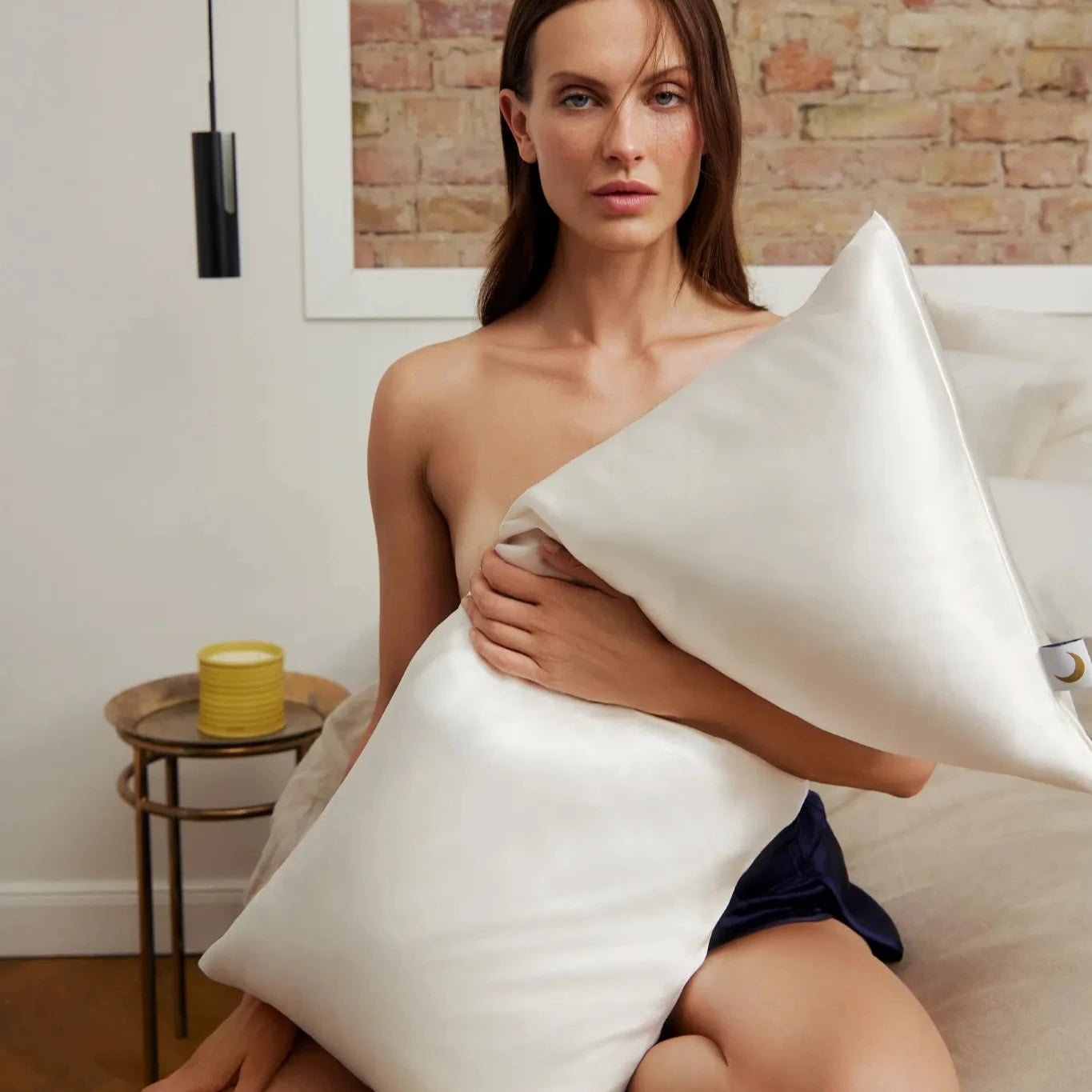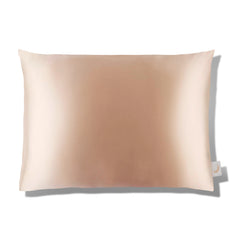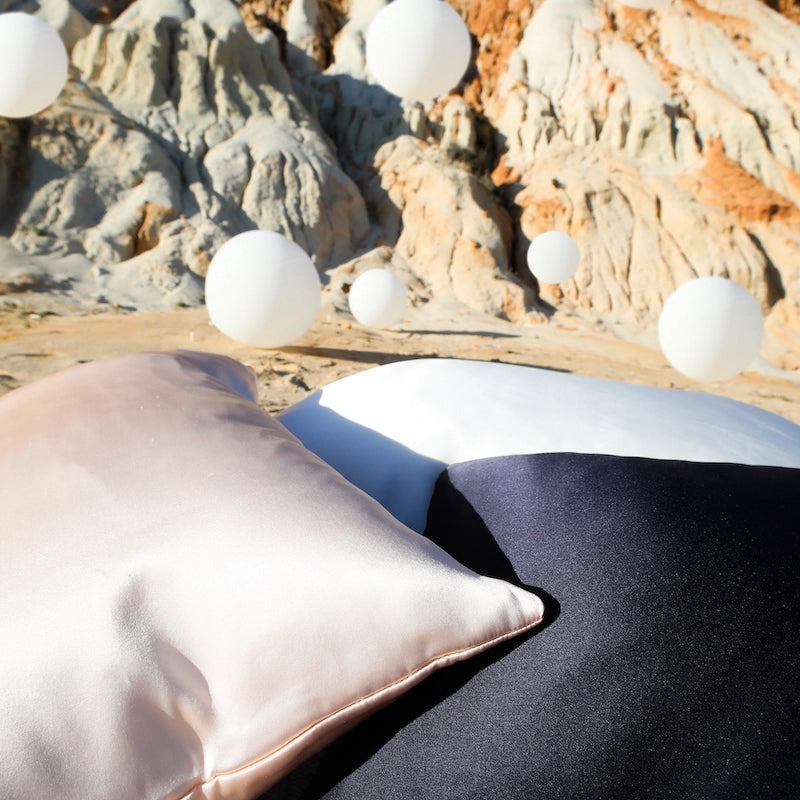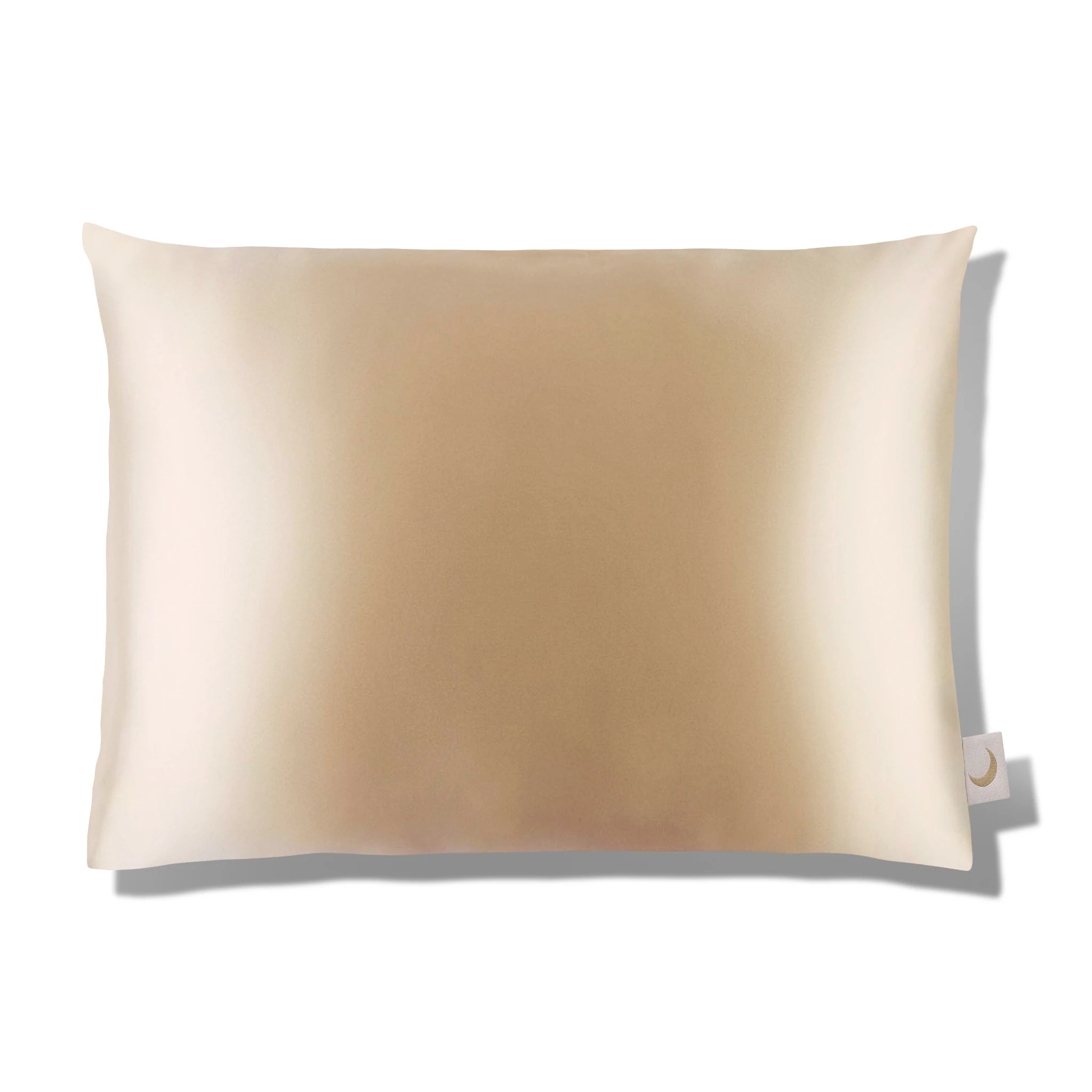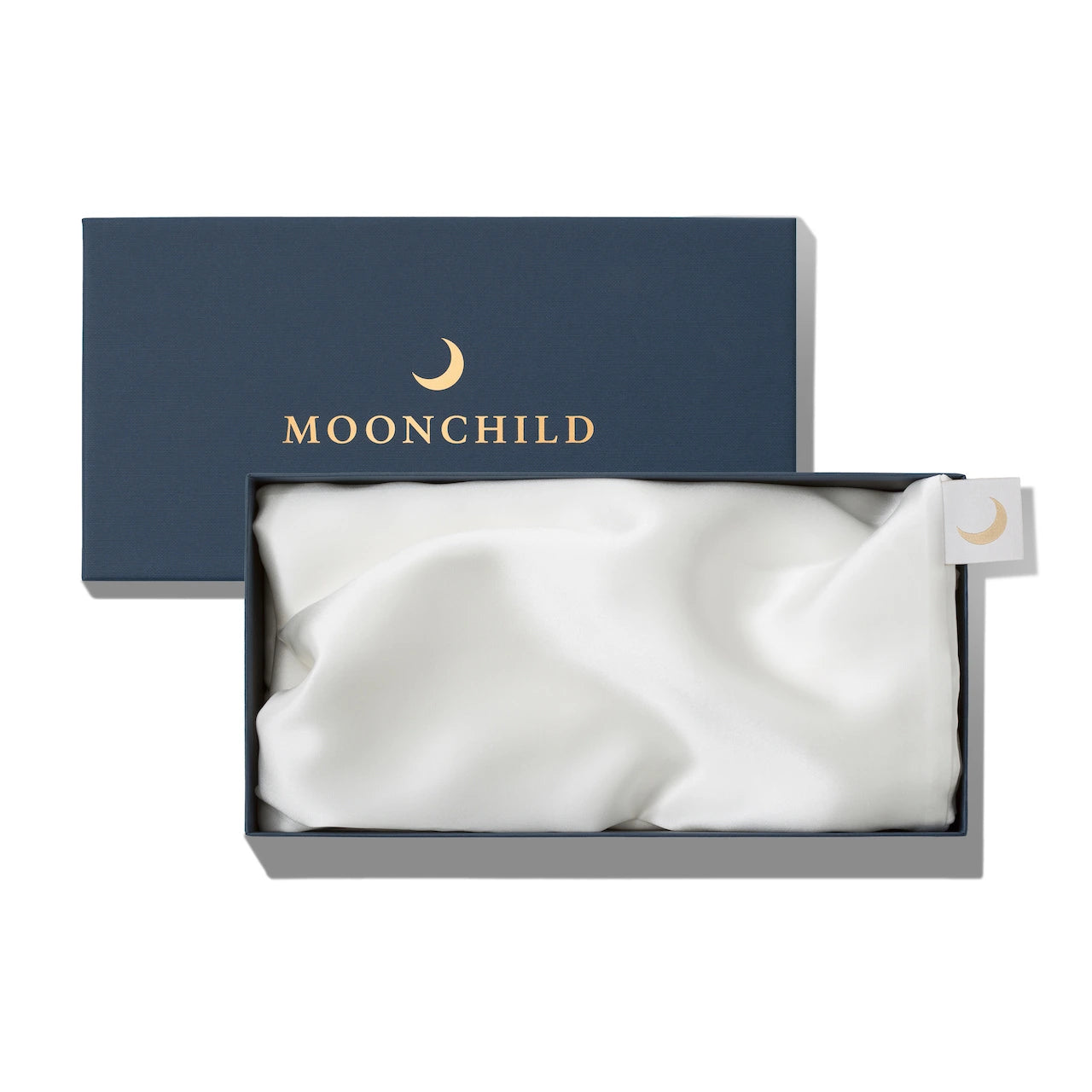Vegan silk pillowcase alternatives - are they organic?
With the current number of different silk pillowcase alternatives on the market – such as pillowcases made of vegan silk – it's worth investigating whether they are true alternatives with all the benefits of silk, how they are made, and whether they are organic and therefore safe to use.
Can Satin be considered a Vegan Silk Alternative?
'Satin' or 'sateen' is the way a fabric is woven and says nothing about the fibre itself. The matter of satin vs. silk therefore goes as follows: A satin pillowcase may be made of vegan silk, but if the fibre is not mentioned, you can assume that it is made of polyester. Polyester is a synthetic fiber made from petrochemicals, and its production requires the use of potentially dangerous chemicals. The process of converting petrochemicals into polyester fibers involves several steps, including polymerization, spinning, and weaving, all of which may involve the use of chemicals that can be harmful to human health and the environment.
Some of the chemicals used in the production of polyester include ethylene glycol, which is toxic if ingested or inhaled, and dimethyl terephthalate, which can cause skin irritation and respiratory problems if inhaled. In addition, the manufacturing process of polyester often involves the use of solvents and dyes that can be harmful to the environment.
Furthermore, polyester is not biodegradable, which means that it can take hundreds of years to break down in a landfill. This makes it a less environmentally friendly option when compared to natural fibers, such as cotton or wool.
Overall, while polyester is a durable and versatile fabric that is commonly used in clothing, it is not considered a sustainable or eco-friendly option due to the potentially toxic chemicals used in its production and its non-biodegradable nature. The advantages of polyester are that it can have a smooth surface and is quite affordable, but it does not have the natural properties of (vegan) silk.
Cupro Silk Vegan Silk Pillowcase
Cupro, also known as cuprammonium rayon, is a regenerated cellulose fiber made from cotton linters or other types of plant fibers. The process of converting these plant fibers into Cupro fabric does not require any highly toxic processing.
The Cupro manufacturing process typically involves dissolving the plant fibers in a solution of copper oxide and ammonium, then extruding the solution through fine holes to form fibers that are spun into yarn and woven into fabric. While the chemicals used in this process can be potentially hazardous, Cupro's closed-loop manufacturing process ensures that nearly all of the chemicals used are recovered and reused, rather than released into the environment.
Overall, Cupro is considered to be a more sustainable and environmentally friendly option than many other types of synthetic fabrics, such as polyester or nylon, as long as it is processed in a closed loop. It has a luxurious and silky texture and is often used in high-end fashion garments, as well as linings and underwear. If you're looking for a sustainable and environmentally friendly fabric, Cupro may be a good option to consider. Cupro is the closest to vegan silk due to its smooth feel.
Eucalyptus Silk Pillowcase - an Alternative? Why Eucalyptus Silk is not Vegan Silk!
Eucalyptus textile, also known as Tencel or Lyocell, does not require highly toxic processing. The process of turning eucalyptus wood into Tencel fabric is a closed-loop process that recovers and reuses almost all of the solvents and water used in the production process, resulting in a highly sustainable and environmentally friendly material.
The process begins with the harvesting of eucalyptus trees from sustainably managed forests, which are then chopped into small pieces and dissolved in a non-toxic, biodegradable solvent called N-methylmorpholine-N-oxide (NMMO). The resulting solution is then extruded through fine holes to form fibers, which are spun into yarn and woven into fabric.
Tencel's closed-loop manufacturing process ensures that the solvents and water used in the process are reused rather than released into the environment, making it a more sustainable option than many other fabrics.
In addition, Tencel, sometimes referred to as eucalyptus silk, is naturally antibacterial, moisture-wicking and breathable, making it a popular choice for clothing and bedding. Overall, Tencel is considered a more environmentally friendly and sustainable alternative to many other types of textile materials. It is processed and woven in China, just like most conventional silk.
However, its surface is not as soft as silk and does not prevent the same amount of friction as silk. Eucalyptus is not considered vegan silk, but rather a great alternative to cotton bedding. There is nothing more to 'eucalyptus silk' than a clever marketing name to gain reach and relevance. Even fast fashion can hide behind the buzzword 'vegan silk'. We always recommend checking where and under what working conditions the garments and the fabrics are produced.
The term 'eucalyptus silk' is only used by brands, not by the manufacturer of the fabric itself. Not everything labeled 'vegan silk' has the properties of silk. And vegan is not the same as organic.
Vegan Silk Pillowcases and Bedding made of Bamboo?
The process of turning bamboo into textiles is not inherently toxic, but it does require heavy chemical processing to break down the tough bamboo fibers into a soft and usable fabric. The most common method of processing bamboo involves a chemical called sodium hydroxide (also known as caustic soda) and carbon disulfide. These chemicals are used to dissolve the bamboo plant and extract the cellulose, which is then spun into yarn or thread and woven into fabric.
While sodium hydroxide and carbon disulfide are both potentially dangerous chemicals, they can be used safely in the production of bamboo fabric if proper safety protocols are followed. However, some unscrupulous manufacturers may cut corners on safety measures to cut costs, which can lead to environmental pollution and health risks for workers.
If you're concerned about the environmental and health impacts of your textiles, you can look for bamboo fabric that has been certified by third-party organizations, such as Oeko-Tex or the Global Organic Textile Standard (GOTS). These certifications ensure that the fabric has been produced using environmentally friendly methods and is free of harmful substances.
Peace Silk Pillowcase - is Peace Silk Vegan Silk?
In addition to being cruelty-free and allowing full metamorphosis, Peace Silk has another exceptional benefit: the silk itself and the production process are completely organic. How is this possible? Read on here. Depending on your own definition of vegan, Peace Silk can be considered vegan silk because there is no cruelty to animals involved. The cocoons are collected as leftovers after the silkworm has completed its metamorphosis and no longer needs its protective cocoon.
The debate about whether Peace Silk should be considered vegan silk or not depends on how you define veganism. If veganism is defined as abstaining from all products of animal origin, then Peace Silk can be considered vegan-friendly. While some animal rights organizations argue that Peace Silk is not cruelty-free, this claim is not supported by any credible sources. Furthermore, the assumption that the silkworms used in the production of Peace Silk die a painful death is also false. In fact, our Peace Silk is obtained from the wild Bombyx indica spinner, which is not overbred and is allowed to live out its natural life cycle. Peace Silk is an emotional and trendy issue that offers a natural, non-synthetic alternative. It should not be exploited by animal rights activists for populist purposes and publicity, as we all share the same goal of preventing animal suffering.
Vegan Silk Pillow Case Alternative - Conclusion
Vegan does not mean natural or organic. A satin pillowcase can be made of polyester, which is not organic. An eucalyptus silk pillowcase is more like cotton than silk. A cupro silk pillowcase is the closest thing to real silk, although you have to consider the processing when buying cupro. Only organic fibers provide all the benefits of real organic silk.
It is always worthwhile to examine all the factors in the production process, such as:
Is the textile made of natural fibers?
Is the processing free of harmful toxins?
Is it safe for: animals, nature and textile workers?
Where is it produced?
Is fair work guaranteed along the supply chain?
Is the garment free of harmful toxins?
Read more about toxins in textiles and check out our comparison of sustainable textile certifications. We benefit from a pillowcase made of organic Peace Silk. The closer silk is left to its natural state, the greater its beautifying superpowers. Quality has its price, and a real silk pillowcase may be worth the investment if it lasts longer and helps us sleep better. When we sleep better, we look, feel and act better.
